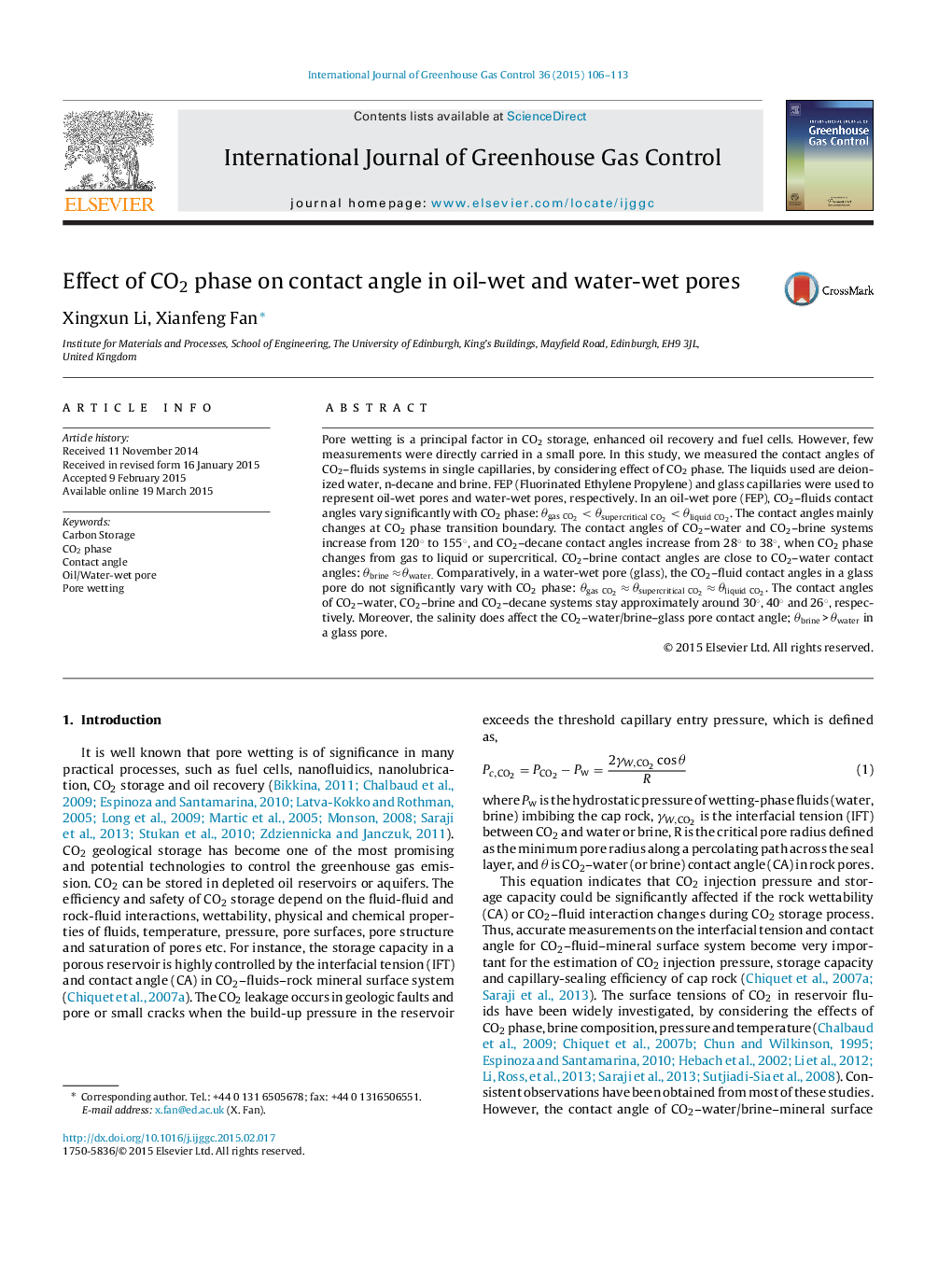| کد مقاله | کد نشریه | سال انتشار | مقاله انگلیسی | نسخه تمام متن |
|---|---|---|---|---|
| 1743017 | 1521985 | 2015 | 8 صفحه PDF | دانلود رایگان |

• We developed a technique to experimentally measure CO2–fluid wetting in a small pore.
• CO2 phase affects CO2–fluid contact angle significantly in an oil-wet pore.
• The effect of CO2 phase is not pronounced on contact angle in a water-wet pore.
• Salinity has a significant effect on the CO2–water/brine–glass pore contact angle.
Pore wetting is a principal factor in CO2 storage, enhanced oil recovery and fuel cells. However, few measurements were directly carried in a small pore. In this study, we measured the contact angles of CO2–fluids systems in single capillaries, by considering effect of CO2 phase. The liquids used are deionized water, n-decane and brine. FEP (Fluorinated Ethylene Propylene) and glass capillaries were used to represent oil-wet pores and water-wet pores, respectively. In an oil-wet pore (FEP), CO2–fluids contact angles vary significantly with CO2 phase: θgas CO2<θsupercritical CO2<θliquid CO2θgas CO2<θsupercritical CO2<θliquid CO2. The contact angles mainly changes at CO2 phase transition boundary. The contact angles of CO2–water and CO2–brine systems increase from 120° to 155°, and CO2–decane contact angles increase from 28° to 38°, when CO2 phase changes from gas to liquid or supercritical. CO2–brine contact angles are close to CO2–water contact angles: θbrine ≈ θwater. Comparatively, in a water-wet pore (glass), the CO2–fluid contact angles in a glass pore do not significantly vary with CO2 phase: θgas CO2≈θsupercritical CO2≈θliquid CO2θgas CO2≈θsupercritical CO2≈θliquid CO2. The contact angles of CO2–water, CO2–brine and CO2–decane systems stay approximately around 30°, 40° and 26°, respectively. Moreover, the salinity does affect the CO2–water/brine–glass pore contact angle; θbrine > θwater in a glass pore.
Figure optionsDownload as PowerPoint slide
Journal: International Journal of Greenhouse Gas Control - Volume 36, May 2015, Pages 106–113